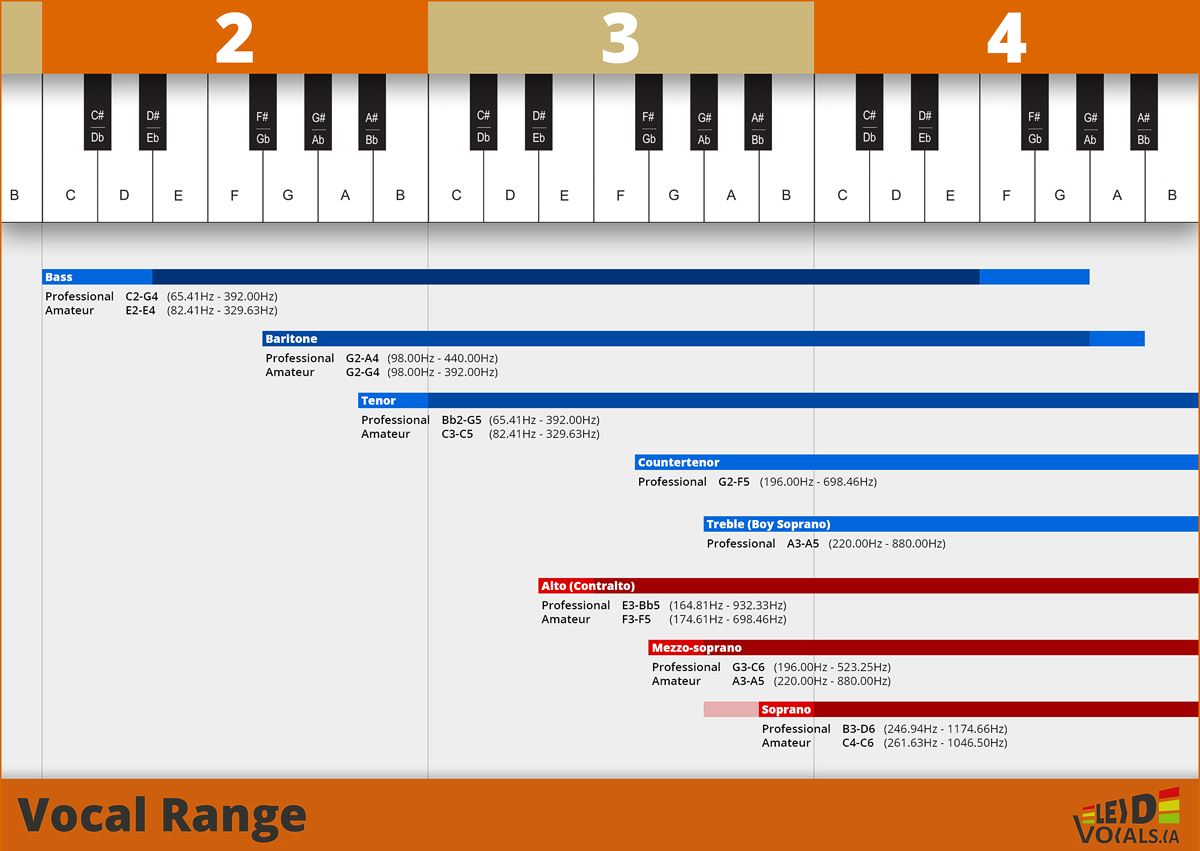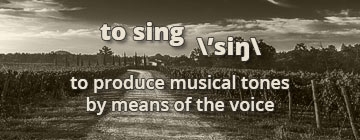Vocal Range, Voice Types, and the Sweet Spot
Voices are as individual as humans
As we may very well witness just about every single day in our lives, the human voice is able to produce sounds that differ in a variety of physical attributes such as tone, intensity, timbre, and pitch. On top of this diversity of sound sits the fact, that each one of us is "made" a little different, relying on a human body that includes anatomic qualities such as gender, figure, and muscular strength to name a few.
With so many different variables it comes to no surprise that our voices distinguish themselves simply through their physical abilities.
What is vocal range?
In the world of vocalists a terminology has been developed that describes these differences in regards to its quality and possible states. Take for example the "vocal range" which describes the spectrum between the lowest and the highest pitch a singer can physically produce while thinking in terms of musical notes.

Vocal range in relation to the note spectrum of the piano.
Download
- Vocal Range Diagram (PDF, 2.66 MB)
In our diagram we show the different vocal ranges in relation to the spectrum of the piano, or should we say the majority of that spectrum. Vocal ranges in blue (Bass, Baritone, Tenor, Countertenor, and Treble) belong to the male voice, and the ones in red (Alto, Mezzo-soprano, and Soprano) to the female gender. The yellow "Vocal Fry" and "Whistle Voice" mark the lowest and highest possible sounds of the human voice.
A practical application
It is to mention that the terminology for the different vocal ranges has its prime in a practical application that has been and is common to vocalists performing in classical music. Here the vocal ranges are understood as voice types, and the classification is seen as a help to cast the right singers for their roles in choirs, operas, musicals and such.
The idea is to represent a range of notes that is easy to cover, feels comfortable, and can be hit without voice strain for the vocalist. The note range and the volume difference between lowest and highest note of compositions in the genre is called "tessitura", and builds the base for the casting.
The sweet spot
Beside this practical application many singers are confronted with the concept of vocal range and voice types as it is commonly used in music education for vocalists. Though one might successfully argue that many professional trained singers will achieve producing notes well out of the range of their respective voice type, and there are many famous examples of singers that have access to an impressive vocal range, knowing ones voice type may help to determine the sweet spot of the voice.
The sweet spot lies within that notes, that have a nice sounding timbre which is supported by the strong presence of lower and higher overtones. Notes in the sweet spot allow the singer to effortlessly articulate the sound by projecting feelings reaching from soft to loud to angry, etc. On a mostly unconscious level the audience is perfectly capable of perceiving the vocalists' sweet spot as highlight of the performance, a fact some of popular music culture is built upon.
Further reading
Now that we have gained an understanding about vocal range and voice types we invite you to read further into the topic. Find out how we define vocal registers in literature and how to switch from one to another, or read about why and how singers approach changing the key of the songs they perform. Or, discover a new song to add to your repertoire by selection of your vocal range.
- "Voice Break and Switching Vocal Registers"
www.leadvocals.ca/background/voice-break-and-switching-vocal-registers - "The Mystery behind Key Change"
www.leadvocals.ca/background/the-mystery-behind-key-change - "Practice Singing at Lead Vocals by Vocal Range"
www.leadvocals.ca/practice/vocal-range














